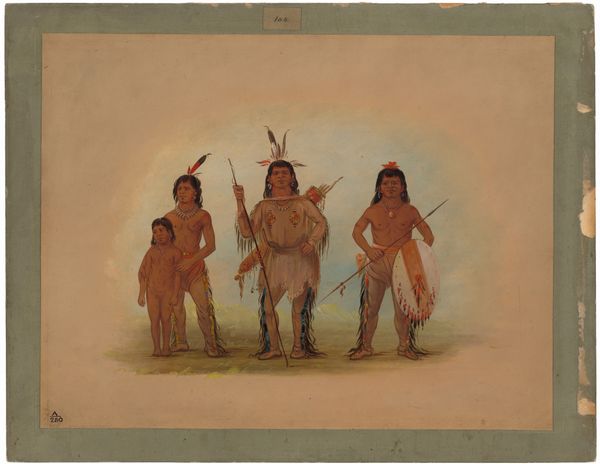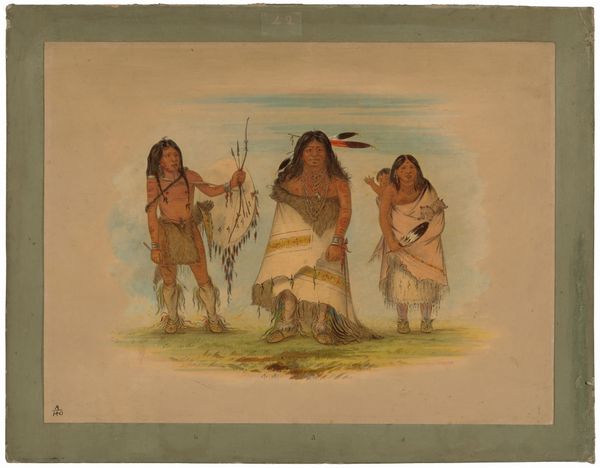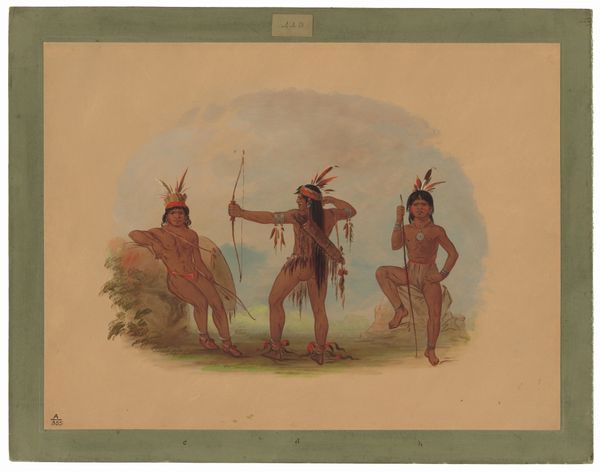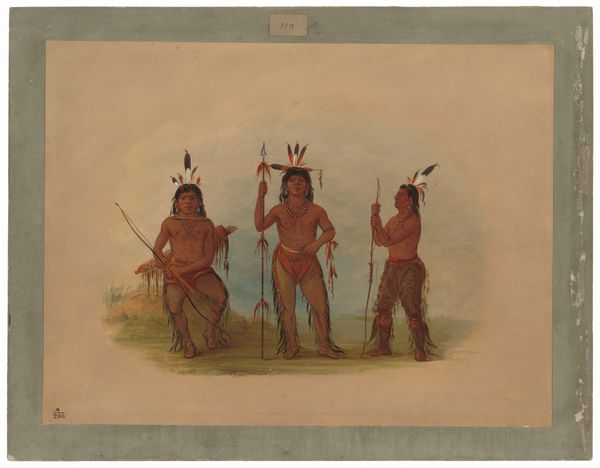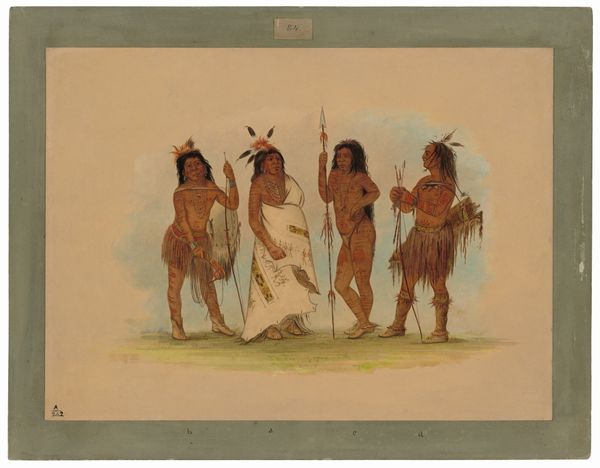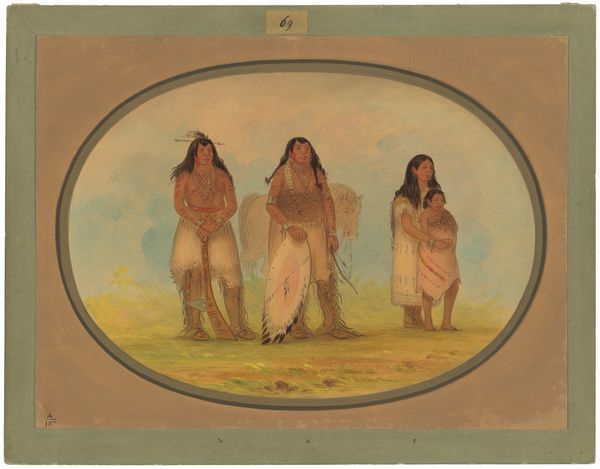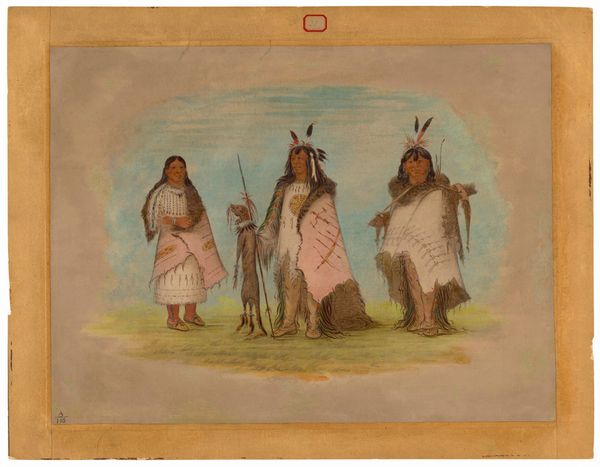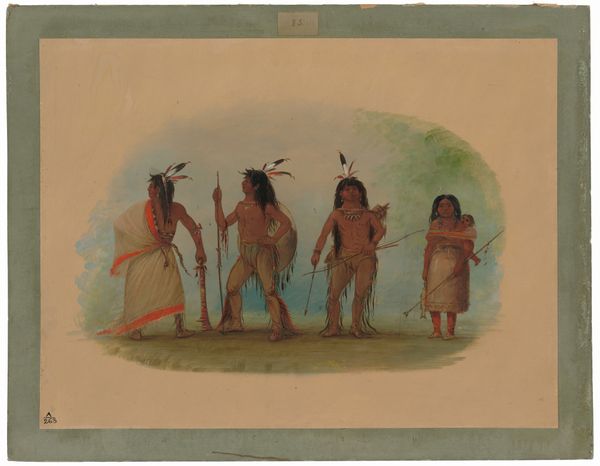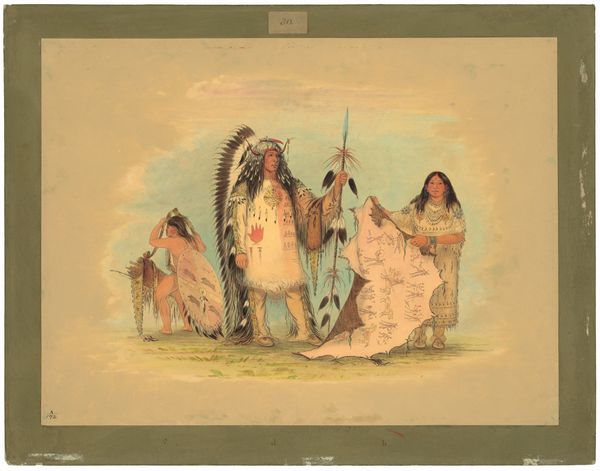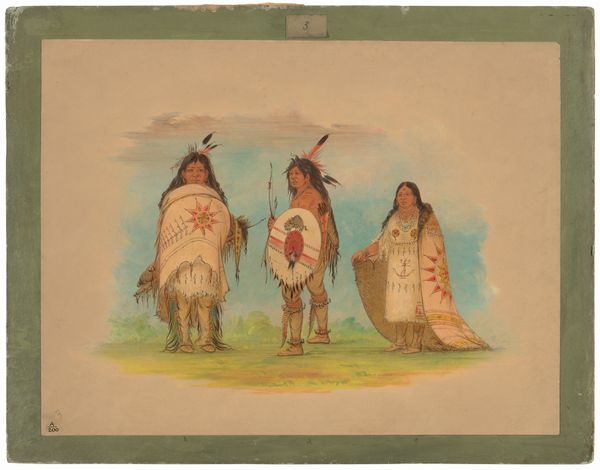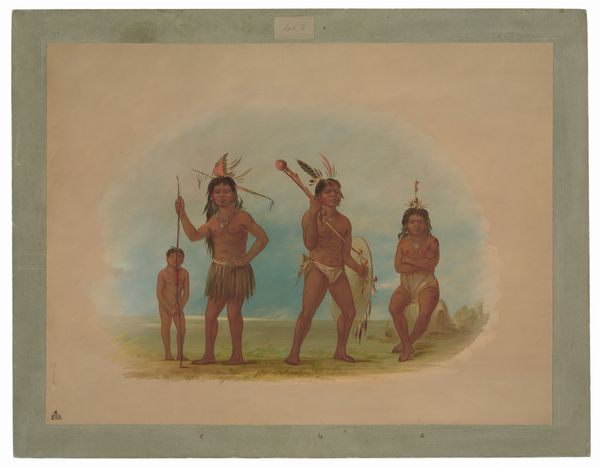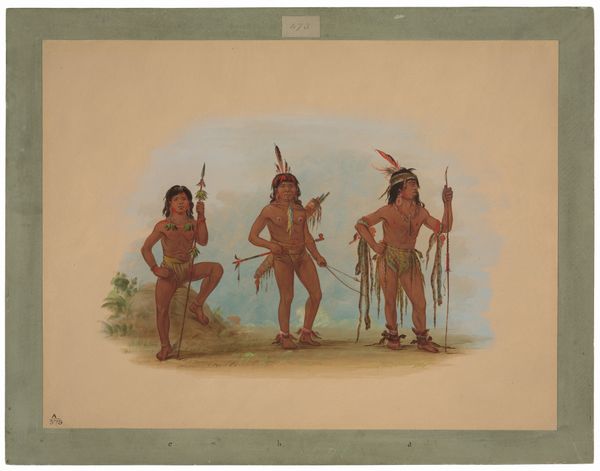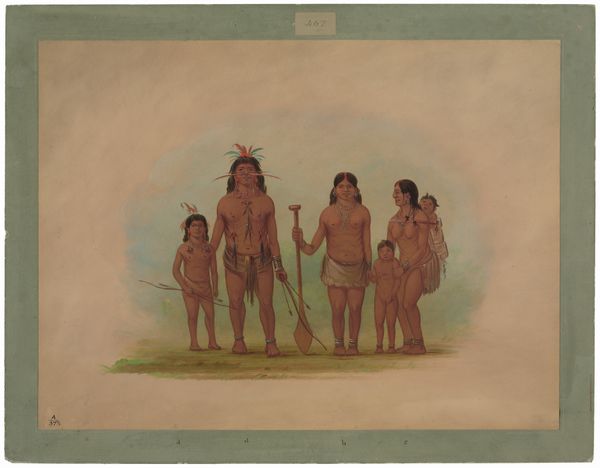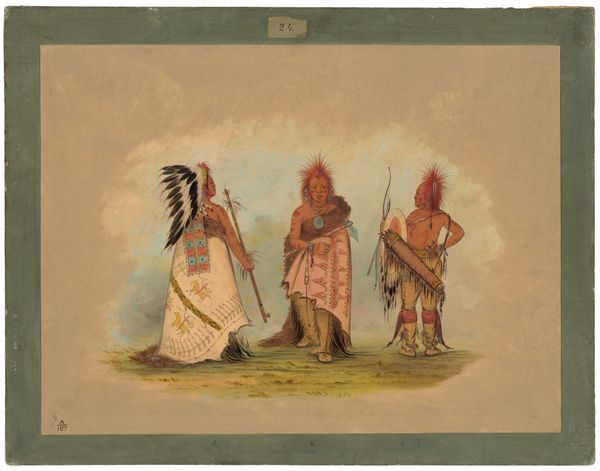
gouache
#
portrait
#
gouache
#
water colours
#
gouache
#
figuration
#
watercolor
#
indigenous-americas
Dimensions: overall: 45.5 x 60.3 cm (17 15/16 x 23 3/4 in.)
Copyright: National Gallery of Art: CC0 1.0
Curator: I find myself immediately drawn to the solemnity of these figures; their stillness almost meditative. Editor: You've touched on something interesting. What we're looking at is "Three Minatarree Indians," rendered in watercolor and gouache by George Catlin around 1861. This work gives us an invaluable glimpse into the visual culture of the time, particularly representations of indigenous peoples. Curator: Representation is a key point. Look at how each figure presents unique symbolic attire—the feathers, shields, and decorative elements seem deliberately placed to convey individual status and spiritual connection. The colors, while muted, resonate with earthy tones. Do you sense the sacredness in these details? Editor: Indeed. Catlin's work, part of a broader effort to document Native American life, inevitably carries the weight of colonial influence. How much is direct observation, and how much is filtered through the lens of a dominant culture seeking to classify and understand? The work reflects a moment of immense cultural pressure on indigenous communities. Curator: Pressure yes, but there is resistance also in self representation, where clothing is not just utilitarian but communicates deeply held cosmological beliefs and tribal affiliations. This level of self-decoration reveals profound intention. Think about the continuity of such designs – patterns passed down through generations carrying stories of origin and identity. Editor: Precisely. While Catlin aimed to preserve, we must ask: preserve for whom, and at what cost to the portrayed? Works like this also circulated in exhibitions and publications, shaping European and American public perceptions. So it acted within a system of power, defining and delimiting who these people were for a wider audience. Curator: Perhaps, then, by questioning the intention behind preservation and focusing on the intrinsic symbolic language of these figures, we find pathways toward reclaiming indigenous narratives, celebrating resilience against that defining gaze you mentioned. Editor: Agreed. Examining "Three Minatarree Indians" provokes critical dialogue, blending appreciation of artistry with historical accountability – something essential when we encounter art with complicated pasts. Curator: Absolutely. An important visual story indeed about encounter, identity, and symbolic assertion!
Comments
No comments
Be the first to comment and join the conversation on the ultimate creative platform.
